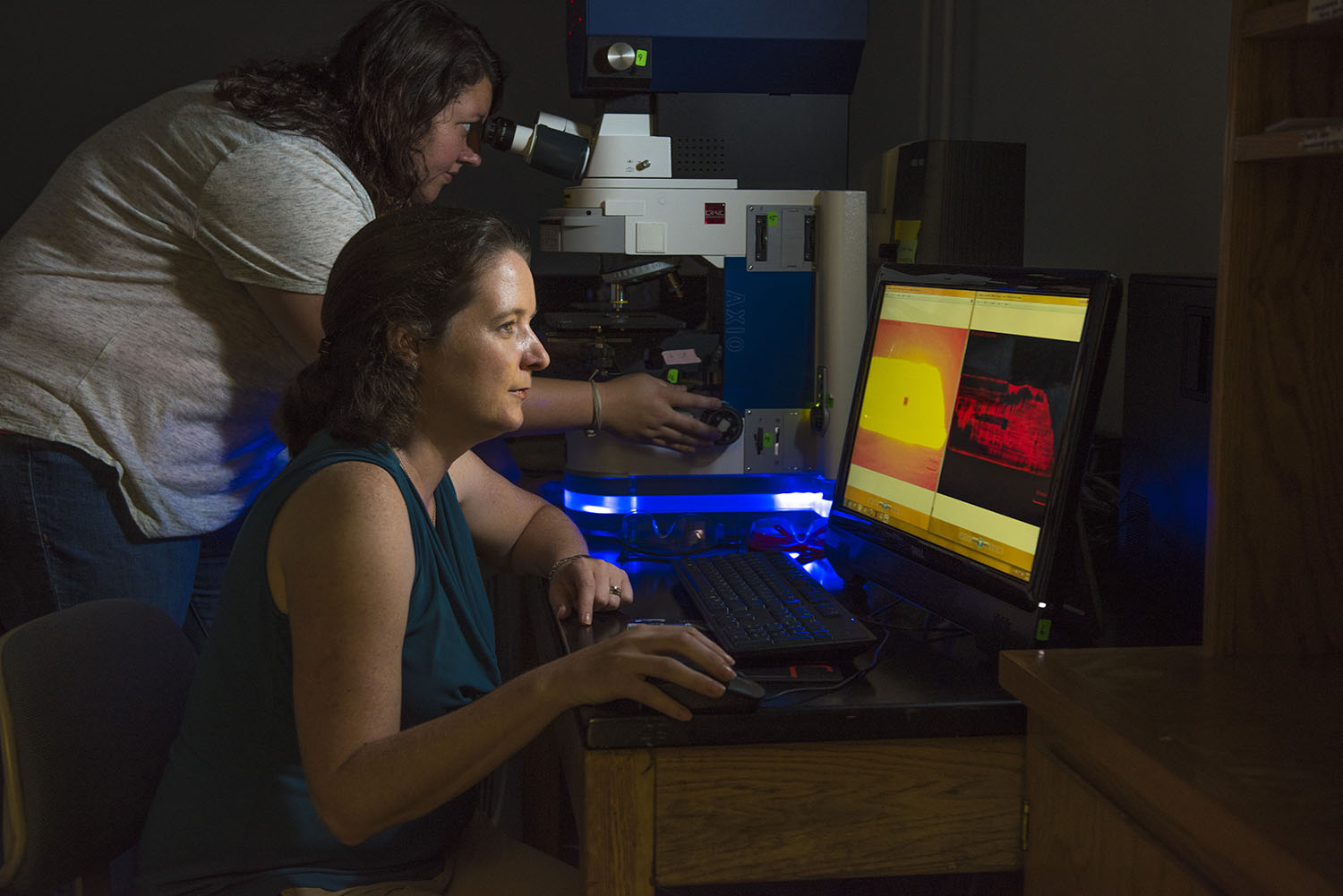COSAM News Articles 2016 January Fighting terrorism in the lab: COSAM chemist works to minimize detrimental effects of radioactive materials
Fighting terrorism in the lab: COSAM chemist works to minimize detrimental effects of radioactive materials
A rise in global terrorism in past decades has led to increased preparedness by first responders, especially with respect to the threat of radiologic terrorism. A terrorist attack involving radioactive materials, or any radiation accident for that matter, requires first responders to quickly and efficiently detect and identify harmful agents. Experts are consistently inventing new and better methods of detection, and on the front line of this effort is Anne Gorden, associate professor in the Department of Chemistry and Biochemistry.
Gorden is developing chemosensors for first response detection of heavy metals such as uranium, neptunium, and plutonium. The word, “chemosensory” refers to the ability to detect a chemical using one of the five senses. Radiation is odorless and cannot be seen. Gorden is hoping to change that. She is developing a new method of detection that will make radioactive materials both more visible and colorful.
“We are making organic compounds using colormetric ot fluorescent sensors that will selectively bind to metal and present a color result that can be associated with a specific metal,” said Gorden. “The results will be fast and tell you exactly what kind of metal is present.”
According to a 2015 *study conducted by the Department of Homeland Security, a primary drawback of the most popular methods used for detecting radioactive material is an inability to differentiate between types of radioactive metals.
“Different materials are cleaned up in different ways,” said Gorden, “so knowing, immediately, what kind of radiation you are dealing with, by giving the user visual indicators of the presence of radioactive material, we can help limit the spread of contamination and also help protect personnel.”
Current radiation analysis techniques require a Geiger counter, expensive equipment, and user expertise. Gorden’s chemosensor, on the other hand, will be inexpensive to produce, easy to carry and use in the field, and require very little user training.
“Currently, every first responder is not able to carry a radiation detector,” said Gorden. “We imagine our process will be as simple as testing the pH and chlorine values in a swimming pool.”
Gorden’s research is supported by a $450,000, three-year grant from the Defense Threat Reduction Agency. Her research group is comprised of four graduate students and six undergraduate students. She is also working with colleague Chris Easley, the C. Harry Knowles Professor, to incorporate her chemosensor into a microfluidic method for rapid radiation screening. For more information on Gorden, visit her website at http://www.auburn.edu/cosam/gorden.
*The study, “Neutron-Detecting Personal Radiation Detectors and Spectroscopic PRDs Market Survey Report,” was published in February 2015.
Latest Headlines
-
02/12/2025
-
02/11/2025
-
02/10/2025
-
01/30/2025
-
12/03/2024




